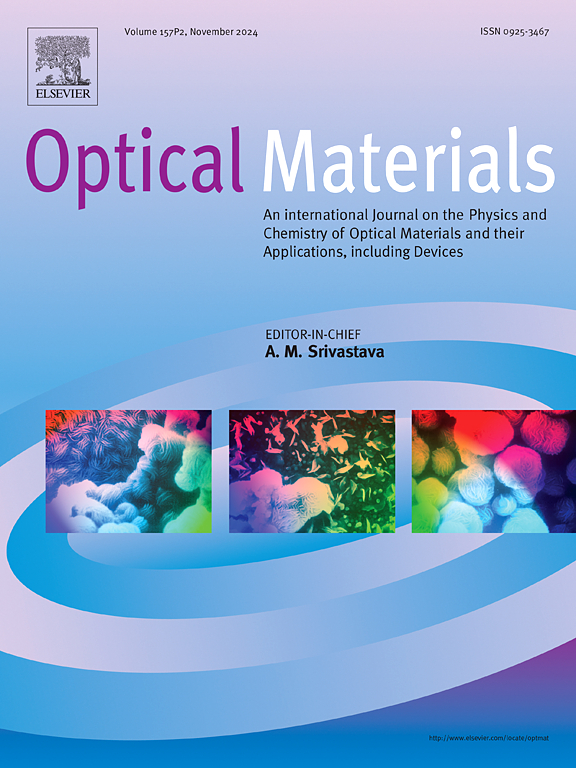Charge transition level energies of the 1+, 2+, 3+, and 4+ 3dq transition metals; new insight and tutorial review
IF 3.8
3区 材料科学
Q2 MATERIALS SCIENCE, MULTIDISCIPLINARY
引用次数: 0
Abstract
The defect levels of the 3 transition metals (TM) within the bandgap of compounds provide compounds with properties that are utilized in e.g. luminescence, lasers, photochromism, batteries, catalysis, semiconductors, biochemistry. Knowledge of the ground-state level locations, or equivalently the charge transition level (CTL) energies, or equivalently the vacuum-referred binding energies (VRBE), is important to understand or engineer performance. Despite 70 years of interest in the topic, understanding and controlling TM defect levels remains elusive. In this work, experimental data, theories developed, progress over time, and current status are reviewed, and new insights are presented. We will start with the classic theory, first for free-ion 3 TMs and then for TMs in inorganic compounds and organic complexes. The Slater–Condon , the Racah , , and parameters, the crystal field interaction, and the Tanabe–Sugano diagrams will be treated on a tutorial level. An expression reproducing the CTL energies relative to the vacuum level as a function of the number of electrons in the 3 TMs will be derived. The expression contains five essential parameters related to the chemical shift, Racah parameters, the nephelauxetic effect, and the crystal field. Data on TMs of different valences in 18 chemical environments are collected from the literature. These are inorganic compounds ranging from wide-band-gap halides (F, Cl, Br), chalcogenides (O, S, Se), small-band-gap II–VI and III–V semiconductors, and two TM organic complexes. All provide octahedral or tetrahedral coordinated sites for the TM. Data from luminescence and absorption spectroscopy, deep-level transient spectroscopy, photocurrents, thermoluminescence, and electrochemistry are translated into CTL energies. Next, the derived expression is used to reproduce the CTL energies, providing the values of the five parameters for each compound. The parameters appear strongly related to each other and change predictably with the valence of the TM and the properties of the environment.

1+、2+、3+ 和 4+ 3dq 过渡金属的电荷转移能级;新见解和教程回顾
化合物带隙内3dq过渡金属(TM)的缺陷水平为化合物提供了可用于发光、激光、光致变色、电池、催化、半导体、生物化学等领域的性能。了解基态能级位置,或等效的电荷跃迁能级(CTL)能量,或等效的真空参考结合能(VRBE),对于理解或设计性能非常重要。尽管人们对这个话题有70年的兴趣,但是理解和控制TM缺陷水平仍然是难以捉摸的。在这项工作中,实验数据,理论发展,进展随着时间和现状进行了回顾,并提出了新的见解。我们将从经典理论开始,首先是自由离子3dq TMs,然后是无机化合物和有机配合物中的TMs。Slater-Condon Fk、Racah A、B和C参数、晶体场相互作用以及Tanabe-Sugano图将在教程级别上进行处理。将推导出一个表达式,再现了CTL能量相对于真空水平作为3dq TMs中电子数q的函数。该表达式包含与化学位移、Racah参数、非相干效应和晶体场有关的五个基本参数。从文献中收集了18种化学环境中不同价的TMs的数据。这些无机化合物包括宽带隙卤化物(F, Cl, Br),硫族化合物(O, S, Se),小带隙II-VI和III-V半导体,以及两种TM有机配合物。它们都为TM提供八面体或四面体的配位位点。来自发光和吸收光谱、深能级瞬态光谱、光电流、热释光和电化学的数据被转换成CTL能量。接下来,导出的表达式用于再现CTL能量,为每个化合物提供五个参数的值。这些参数表现出很强的相关性,并随着TM的价态和环境的性质而发生可预测的变化。
本文章由计算机程序翻译,如有差异,请以英文原文为准。
求助全文
约1分钟内获得全文
求助全文
来源期刊

Optical Materials
工程技术-材料科学:综合
CiteScore
6.60
自引率
12.80%
发文量
1265
审稿时长
38 days
期刊介绍:
Optical Materials has an open access mirror journal Optical Materials: X, sharing the same aims and scope, editorial team, submission system and rigorous peer review.
The purpose of Optical Materials is to provide a means of communication and technology transfer between researchers who are interested in materials for potential device applications. The journal publishes original papers and review articles on the design, synthesis, characterisation and applications of optical materials.
OPTICAL MATERIALS focuses on:
• Optical Properties of Material Systems;
• The Materials Aspects of Optical Phenomena;
• The Materials Aspects of Devices and Applications.
Authors can submit separate research elements describing their data to Data in Brief and methods to Methods X.
 求助内容:
求助内容: 应助结果提醒方式:
应助结果提醒方式:


